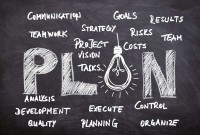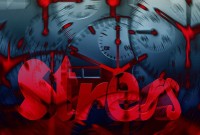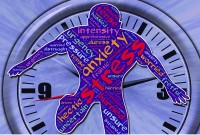- Home
- Business Processes
- Industry Knowledge
- Aerospace Industry
- Automotive Industry
- Banking Domain
- BFSI Industry
- Consumer/ FMCG Industry
- Chemicals Industry
- Engineering & Construction
- Energy Industry
- Education Domain
- Finance Domain
- Hospitality Domain
- Healthcare Industry
- Insurance Domain
- Retail Industry
- Travel and Tourism Domain
- Telecom Industry
- Leadership Skills
- eLearning
- Home
- Leadership
- Problem Solving
- Triggers for Business Change
Triggers for Business Change
As we know change is inevitable as market expectations are not static, new technology is constantly being developed, and organizational responses are inevitable to these sequences. It is a simple matter of business evolution. If every manager and every employee could have some understanding of the triggers of change and their relationships with each other, then the acceptance to change would be easier.
When change is being implemented the natural tendency is to feel threatened by what is happening, if you don't think rationally and emotions and feelings take over. Sometimes, it is all seen as some kind of conspiracy by employers and they perceive that the management is concerned only to look after them. There could be elements of truth in this, but a major educational effort to get everyone in the company to expect change, and indeed to create it within their own spheres, would lead to the path of positive change.
Change is expressed through three main areas: the market itself, the technology to meet market demand competitively, the organization of resources, and the enterprise to achieve success. We also consider the tendency of companies to follow a pattern of similar life cycles. The stage in the life cycle could affect the nature of the changes which might be expected. In this article, we are looking at key triggers that necessitate the change.
1. Market Changes
The market is constantly evolving and the only way to survive in the market is to adapt to what market demands. Some examples of market-driven changes are:
- Customers demand – They want more or less of particular goods or services
- Competitors have begun to get ahead in the race due to aggressive advertising
- Government decisions and new regulations have either freed you or constrained you
- World events have changed the nature of people's expectations – Like the COVID-19 pandemic has constrained the movement of people around the world
- Price mechanisms nationally or internationally have got out of range, imports have become costlier and non-affordable
- New technology has superseded what your organization was good at – MP3 has replaced the need for cassette players
- Political changes in other countries open up opportunities or closed entry
- Raw material shortages have arisen or their prices have shot up
All these create specific changes in your business, whatever it is. The changes in the marketplace will impact your company and if the impact is negative, there will be urgency in the organization to search for new products or for the creation of new expectations from old ones. There will be the decision to explore areas of the globe where you are not previously represented; by expanding your customer base by moving to the right place in order to hold in the demand for the moment.
2. Technological Changes
Technology is naturally enough a significant part of the changing scenario. There are constant development and introduction of new technology that brings process optimization and results in reducing the people costs, or to speed up manufacturing and assembly processes or result in innovative ways of fulfilling a particular need. Technology enables meetings of customer needs, anywhere, at any time, in the form it is wanted and with the minimum of physical material and the maximum of accompanying service. Technological change has a knock-on effect so that change in this field in response to need becomes the trigger of further change. Technology can force an organization to re-establish price advantage, quality pre-eminence, or diversification into new products.
3. Organizational Changes
These changes in the market or technology will also affect the organization. If on the negative side it could result in retrenchment, a reduction in the number of employees, and a reduction in the number of levels of management. The technology itself might require new styles of organization, new sills, and the upgrading of old ones. The number of operating sites may be reduced. People may find themselves performing totally new functions, which they may like or perhaps won't like, at least to start with. The only way to stay in business may be a merger or to be the subject of a takeover, friendly or hostile. With such ownership changes, another market, technological and organizational changes may follow. In some industries, it is an endless cycle.
Most CEOs seeking to improve results do something about the organizational structure and culture of their enterprise. The organization is a matter of structuring the way in which resources are brought and kept together in order to achieve objectives. These resources include people, places, money, materials, and machines. Most changes have some implications for the ways in which resources and relationships are organized. Whether corrective action is being taken or opportunities are being seized, the organization's change will make a difference to the immediacy of reaching and speed of decision-making, information-sharing, communications, and policy implementation.
The culture change brought about by reorganizing is the most difficult handle and the ones that take the longest. They have to overcome the inhibitions of whole corporate life history, and they are likely to meet emotional resistance.
The restructuring of organizations will have to be essentially rational and it will move in different directions, depending on need.
Related Links
You May Also Like
-
Tools for Developing Your Team
If a manager has too many weak spots in the talent of the team, the ability to empower the team members to independently execute the project is impaired. Assignments fall behind schedule or stretch out because the needed skills or knowledge are not in place when needed. To successfully execute important projects, hiring talented people, and increasing the talents of existing staff are most important.
-
Reasons behind Wastage of Time
Under-utilization of time may be due to the faulty system or faults of manager/officer/leader or due to lack of planning. There could be many factors driving the procrastination behavior like system issues, personal work habits, and lack of delegation, personality traits, and bad working habits of the leader, failure to tackle interpersonal conflicts, obstacles, and lack of far-sightedness.
-
All the teams are dynamic in nature and they take time to come together, they form, develop, and grow in stages, over a period of time. Teams go through five progressive stages: Forming, Storming, Norming, Performing and Adjourning. In this article, we want to introduce you to these stages of team development and certain strategies that you can use to help the team grow and develop in each of these stages.
-
In today's innovation-driven economy, understanding how to generate great ideas has become an urgent managerial priority. Managers need to encourage and champion ideas and need to help their organizations incorporate diverse perspectives, which spur creative insights and facilitate creative collaboration by harnessing new technologies. Innovation is the embodiment, combination, and/or synthesis of knowledge in original, relevant, valued new products, processes, or services.
-
In its simplest sense, decision-making is the act of choosing between two or more courses of action. Decision making is a key skill in the workplace and is particularly important if you want to be an effective leader. When decisions have to be made, there are several stages that you should go through to reach a practical solution. Understand the meaning and importance of decision making and how to look at it as a process.
-
Recognizing Stress & its Sources
As an individual, you almost certainly know what stress feels like. Stressors are events or situations to which people must adjust. Stressors may be physical or psychological in nature. The level of severity of stress is determined not merely by exposure but the intensity, duration, and frequency of stressors. The sources of stress are many. They arise from multiple areas both with the individual and from the environment.
-
As we know change is inevitable as market expectations are not static, new technology is constantly being developed, and organizational responses are inevitable to these sequences. It is a simple matter of business evolution. If every manager and every employee could have some understanding of the triggers of change and their relationships with each other, then the acceptance to change would be easier.
-
Stress is an essential part of our life. No one can live without stress. Stress can be beneficial as well as harmful. Stress as a positive influence adds excitement and hope while as a negative influence it can result in destructive feelings, anger, and depression. Although the general orientation to stress is to consider unfavorable outcomes, yet one must have observed that stress experiences may also facilitate the development of effective and varied coping behavior, increased personal resources, and lead to a sense of competence in development. Stress at a moderate level is not only inevitable but may be useful for physical and mental well-being.
-
Evidence of the medically damaging symptoms of work stress necessitates applying the treatment of stress management. Stress management is increasingly drawing the attention to the management experts not only as a remedial measure but also as a way to resource management. If the workplace can be made a little more lovable the increase in the achievement of the organization may be much time more. If group stress can be removed by introducing group discussions and recreational facilities a long-lasting team spirit may get developed.
-
Facilitative Leadership is all about involving the employees in the decision-making process at all levels enhancing their sense of ownership, responsibility, and motivation. Facilitative leadership style uses a number of indirect communication patterns to help the group reach consensus and build commitment for the decision taken. To be effective in modern organizations, managers need to become facilitative leaders, learn what it means to be a one.
Explore Our Free Training Articles or
Sign Up to Start With Our eLearning Courses

About Us
Learning
© 2023 TechnoFunc, All Rights Reserved










